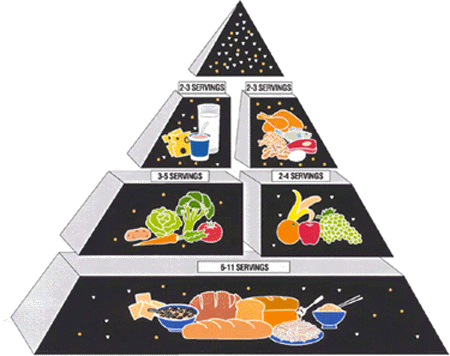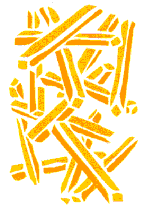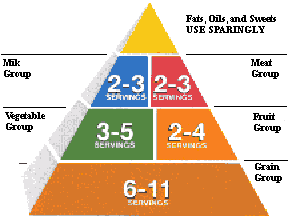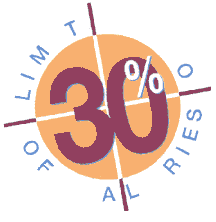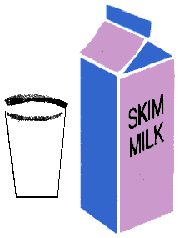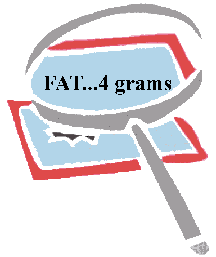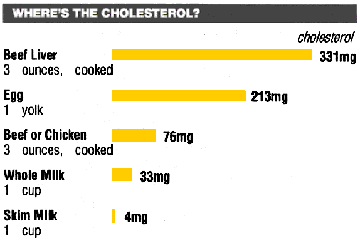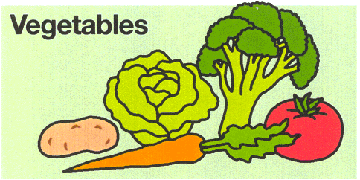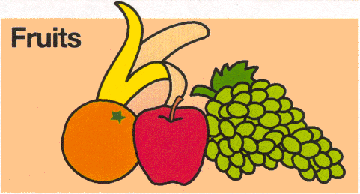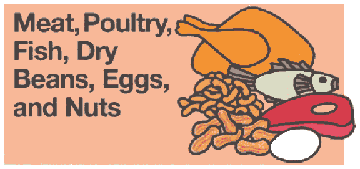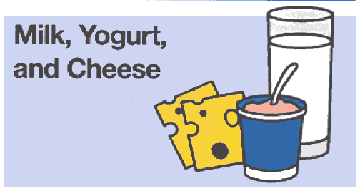| WHERE'S THE SALT? |
| Food Groups |
|
Sodium, mg |
| Bread, Cereal,
Rice, and Pasta |
| Cooked cereal, rice, pasta,
unsalted, 1/2 cup |
Trace |
| Ready-to-eat cereal, 1 oz. |
100-360 |
| Bread, 1 slice |
110-175 |
| Popcorn, salted, 1 oz. |
100-460 |
| Pretzels, slated, 1 oz. |
130-880 |
|
|
|
| Vegetables |
| Vegetables, fresh or frozen, cooked
without salt, 1/2 cup |
Less than 70 |
| Vegetables, canned or frozen with
sauce, 1/2 cup |
140-460 |
| Tomato juice, canned, 3/4
cup |
660 |
| Vegetable soup, canned, 1
cup |
820 |
|
|
|
| Fruit |
| Fruit, fresh, frozen, canned, 1/2
cup |
Trace |
|
|
|
| Milk, Yogurt,
and Cheese |
| Milk, 1 cup |
120 |
| Yogurt, 8 oz. |
160 |
| Natural cheeses, 1-1/2 oz. |
110-450 |
| Process cheeses, 2 oz. |
800 |
|
|
|
| Meat, Poultry,
Fish, Dry Beans, Eggs, and Nuts |
| Fresh meat, poultry, fish, 3
oz. |
Less than 90 |
| Tuna, canned, water pack, 3
oz. |
300 |
| Bologna, 2 oz. |
580 |
| Ham, lean, roasted, 3 oz. |
1,020 |
| Peanuts, roasted in oil, salted, 1
oz. |
120 |
|
|
|
| Other |
| Salad dressing, 1 tbsp |
1 |
| Ketchup, mustard, steak sauce, 1
tbsp. |
3 |
| Soy sauce, 1 tbsp. |
3 |
| Salt, 1 tsp. |
3 |
| Dill pickle, 1 medium |
4 | |
| THE FOOD GROUPS |
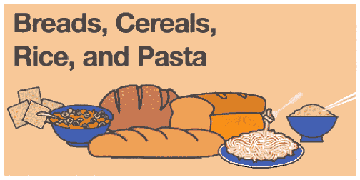 |
Why are breads, cereals, rice, and pasta important?These
foods provide complex carbohydrates (starches), which are an
important source of energy, especially in lowfat diets.
They also
provide vitamins, minerals, and fiber. The Food Guide Pyramid
suggests 6 to 11 servings of these foods a day.
What counts as a serving?
- 1 slice of bread
- 1 ounce of ready-to-eat cereal
- 1/2 cup cooked cereal, rice, or pasta
Aren't starchy foods fattening?No. It's what you add to
these foods or cook with them that adds most of the calories. For
example: margarine or butter on bread, cream or cheese sauces on
pasta, and the sugar and fat used with the flour in making
cookies. |
Here are some selection tips:»To get the fiber you need, choose several
servings a day of foods made from whole grains, such as whole-wheat
bread and whole-grain cereals.
»Choose most often foods that are made with
little fat or sugars. These include bread, english muffins, rice,
and pasta.
»Baked goods
made from flour, such as cakes, cookies, croissants, and pastries,
count as part of this food group, by they are high in fat and
sugars.
»Go easy on the fat
and sugars you add as spreads, seasonings, or
toppings.
»When preparing
pasta, stuffing, and sauce from packaged mixes, use only half the
butter or margarine suggested; if milk or cream is called for, use
lowfat milk. | |


